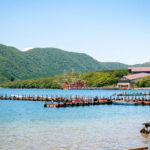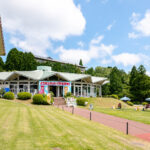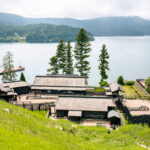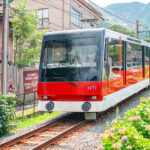This post may contain affiliate links. Please read our disclosure policy.
Famous for its torii gate rising from Lake Ashi, Hakone Shrine also charms visitors with peaceful cedar forest paths and a deep sense of tradition.
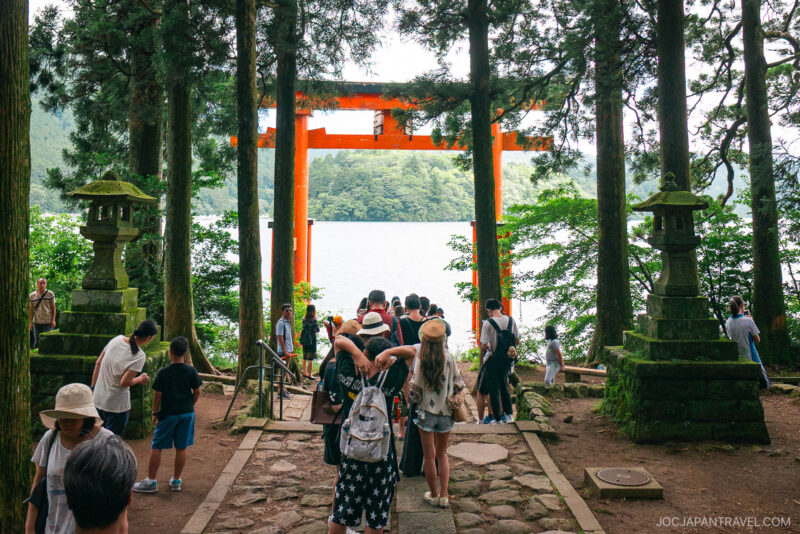
A Shrine with Deep History
Hakone Shrine was founded in 757 during the Nara period. The original shrine stood on Mount Komagatake, accessible today by the Komagatake Ropeway. The main shrine near Lake Ashi was later established to welcome travelers more easily.
The Iconic Red Torii Gate
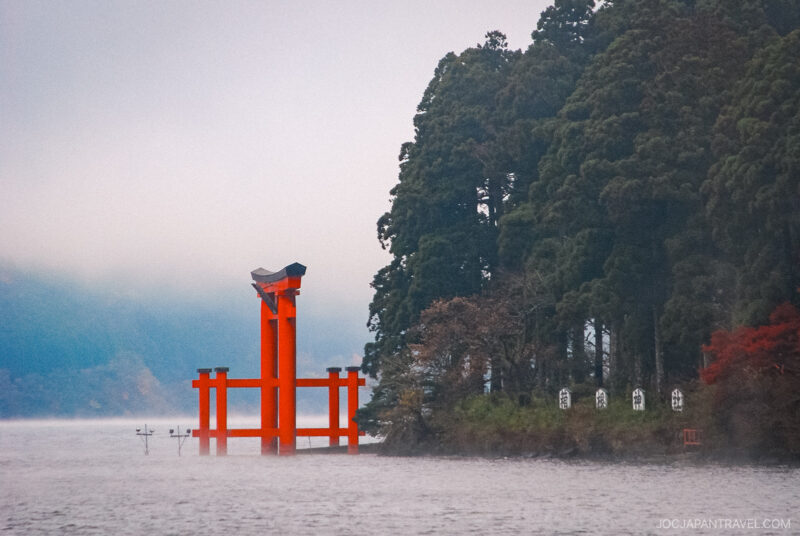
The Heiwa no Torii, or Peace Torii, rises dramatically from Lake Ashi’s waters. It’s one of Hakone’s most photographed landmarks, especially when Mount Fuji appears in the background. The line for photos can be long, but the view is unforgettable.
Exploring the Shrine Grounds
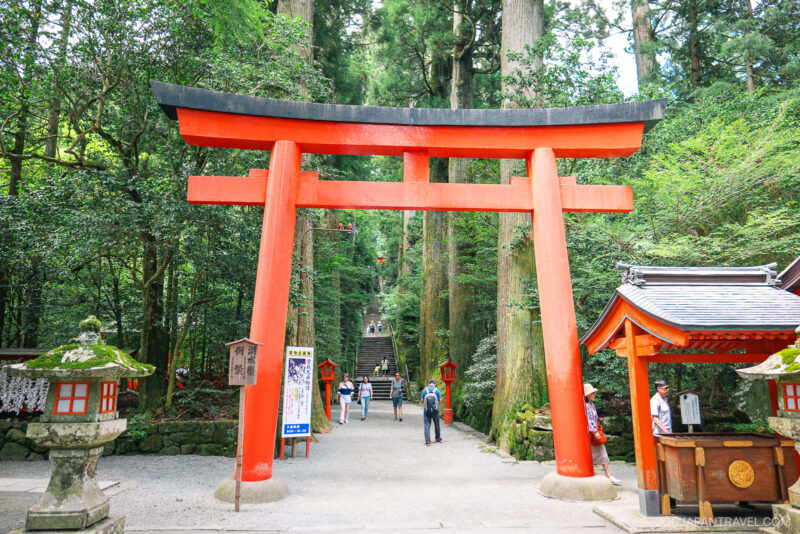
Past the water gate, a steep stone stairway lined with lanterns leads up to the main hall. The grounds are dotted with sub-shrines and shaded by old cedar trees. Surrounded by forest and water, with traditional architecture at every turn, the shrine feels both calming and beautiful.
Kuzuryu Shrine – The Dragon Guardian
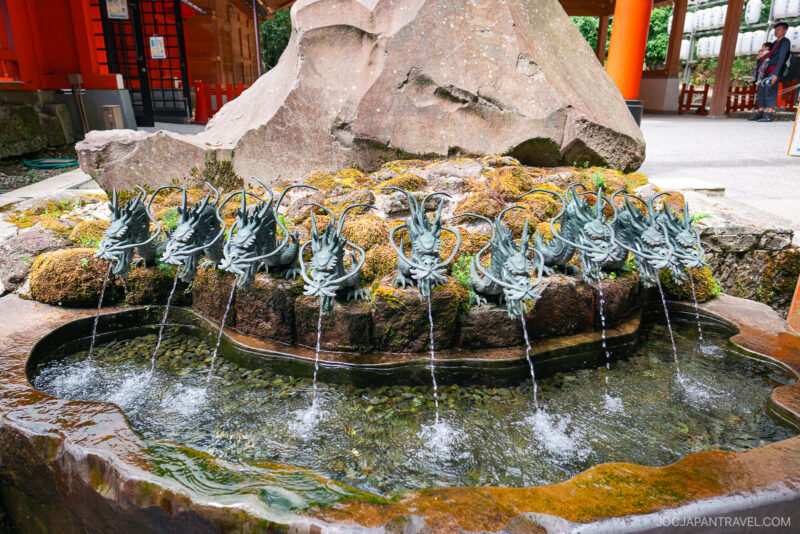
Near Hakone Shrine is Kuzuryu Shrine (九頭龍神社), dedicated to a nine-headed dragon believed to guard Lake Ashi. Many visitors pray here for blessings, prosperity, or safe travels. Our kids loved the dragon-shaped fountains at the water basins, a playful touch that made the purification ritual more engaging.
How to Get to Hakone Shrine
Hakone Shrine sits on the southeastern shore of Lake Ashi. It is easy to reach by bus, foot, or car.
By Bus
- From Hakone-en or Togendai, take an Odakyu Hakone Highway Bus to the Motohakone-ko bus stop. It is a 10 minute walk to the shrine.
- Alternatively, take a Hakone Tozan Bus from Hakone Yumoto Station to Motohakone-ko.
On Foot
Walk about 20 minutes from Hakone-en along the lakeside path. It is a gentle, scenic stroll.
By Car
The driving time from Tokyo is about 1 hour and 45 minutes depending on traffic. Paid parking is available near the entrance. It fills quickly on weekends and holidays. A taxi from Odawara Station takes about 35 minutes and costs around ¥6,000 to ¥7,000.
Pro Tip: The Hakone Freepass covers the bus to Hotel de Yama. It is the easiest option without a car.
Is Hakone Shrine Worth Visiting?
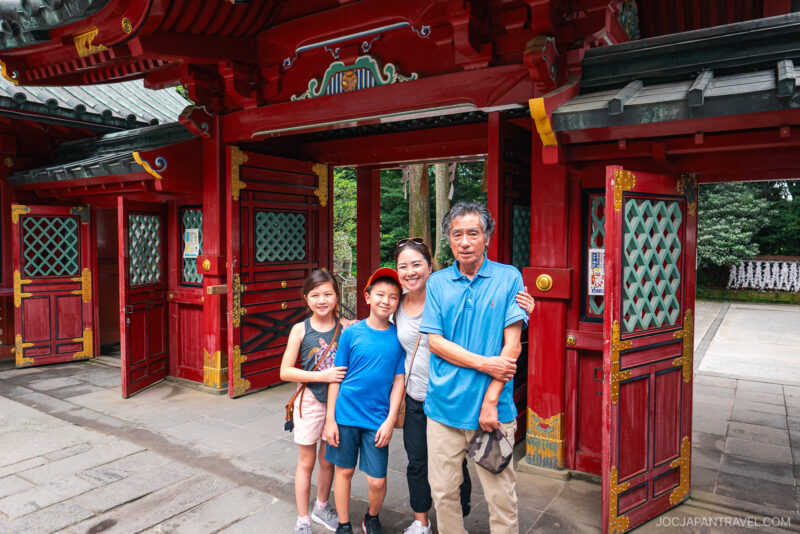
We think Hakone Shrine is one of the highlights of the region and a place our family won’t forget. With its thousand-year history, forested setting, and iconic torii gate rising from the lake, it’s more than just a photo opportunity. Families can enjoy the mix of cultural tradition and natural beauty, all in one peaceful spot.
More to Explore Nearby
Hakone Shrine’s spiritual atmosphere and iconic torii gate in Lake Ashi make it a central point in the Hakone area, positioning you close to scenic transport, historical sites, and major transport links.
- Lake Ashi Travel Guide – Explore the majestic caldera lake itself, where you can take a pirate ship cruise and enjoy the stunning natural setting.
- Hakone Checkpoint Museum – Discover the faithfully reconstructed historical checkpoint where travelers on the Old Tokaido highway were once inspected.
- Hakone-en – Explore this large leisure resort complex on the eastern shore of the lake, featuring a ropeway, aquarium, and various family-friendly attractions.
- Sekisho Karakuri Museum – Discover the traditional crafts and unique puzzle boxes (himitsu bako) of the region at this specialized museum located nearby.

